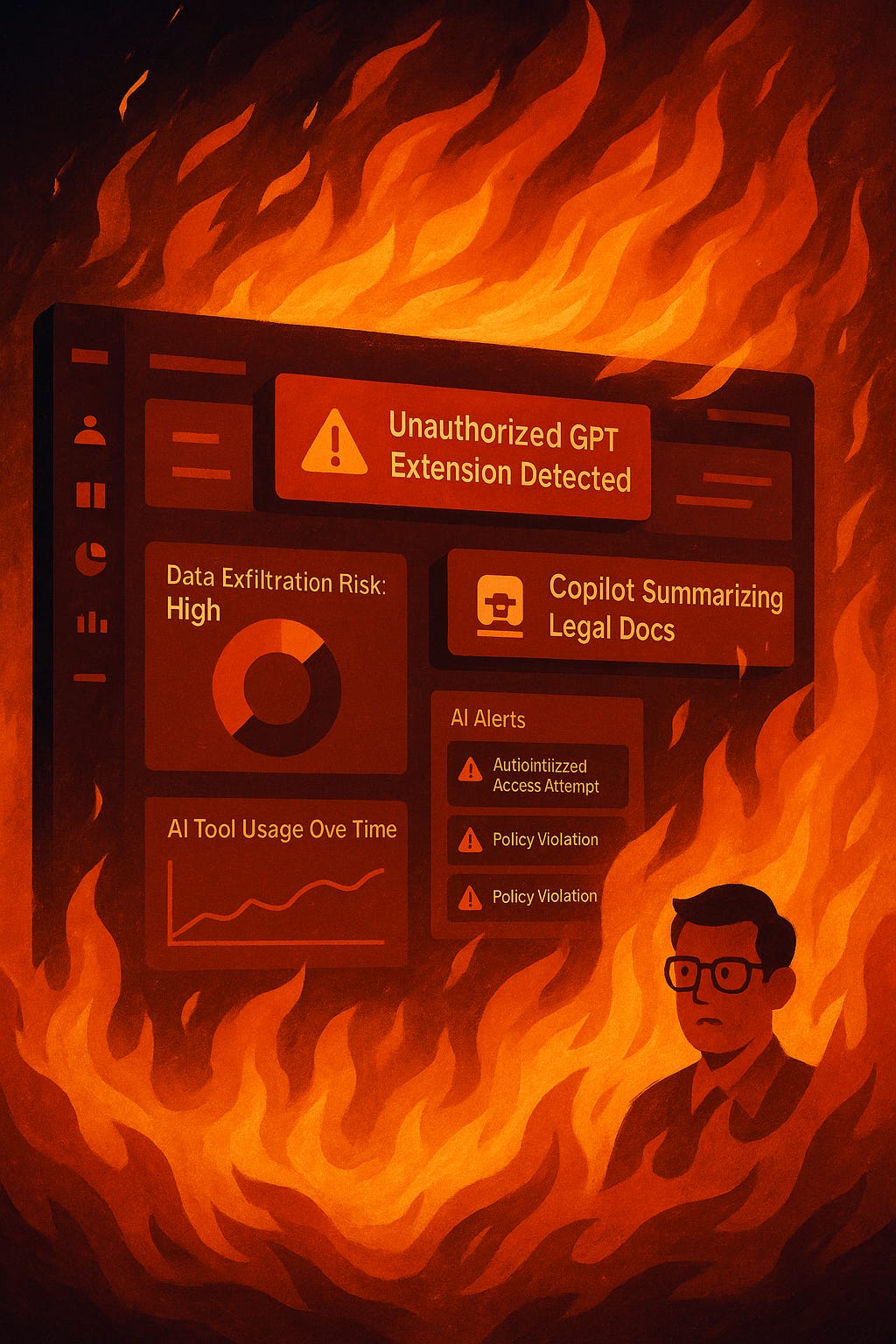Shadow AI, Scope Creep, and the CISO in the Corner
A field report from the frontlines of enterprise AI, where governance lags behind usage and everything is on fire.
CISOs are the adult chaperones at the no-holds-barred enterprise AI party.
The music’s loud, the tools are multiplying, and someone definitely just fine-tuned a model on restricted data. Welcome to GenAI adoption in the wild.
After conversations with security leaders across industries, here’s what’s actually happening behind the scenes:
1. Governance must assume AI is already in use.
AI is already inside your company. The question is: do you know how, where, and why it’s being used? Even without formal rollouts, models are seeping in through vendors, team tools, browser extensions, and well-meaning employees.
CISOs are shifting from permissioned adoption to presumed presence - layering AI policy atop data classification, and updating acceptable use playbooks accordingly.
2. Scope creep is inevitable, plan for it.
One CISO greenlit a tool for summarizing internal memos - only to find it rewriting legal documents two weeks later. This is just how general-purpose tools work: they generalize. So now there’s a philosophical split:
One camp says: approve narrowly, monitor tightly, hope for containment.
The other says: assume it will expand, mitigate broadly, and try to look wise when it inevitably does.
It’s the same debate we saw in early cloud adoption. Once it’s in, it grows.You can’t freeze a moving system. You can only steer it.
3. Experimentation is the goal, not the threat.
Innovation needs room to breathe. Forward-thinking companies are creating sanctioned AI sandboxes, isolated zones where teams can safely test tools with clear usage boundaries, audit logs, and human-in-the-loop review.
The bigger lift? Moving from sandbox to production with oversight intact.
4. AI amplifies old risks more than it invents new ones.
Data loss, shadow IT, excessive access permissions - none of these are new. What’s new is the velocity and opacity of AI that supercharges these risks. What used to take weeks can now happen in seconds, often invisibly.
Third-party models evolve behind closed doors, outside your change management systems.
Sensitive data can slip through prompts, plugins, and browser extensions before anyone notices.
Some models carry “latent behaviors” - responses that activate only under specific inputs, like ticking time bombs you didn’t know you deployed.
The problems aren’t unfamiliar. The speed, scale, and unpredictability are.
5. Policies are only as good as their enforcement.
Leaders are moving from principles to practice:
Embedding violation alerts into workflows
Mandating enterprise accounts for AI tools
Training employees on AI hygiene
Using ROI and behavior metrics (like Copilot usage) to guide decisions
As one CISO told me, with the weary clarity of someone who’s read too many whitepapers: “If your AI governance lives in a PDF, it’s not real.”
TL;DR: AI governance isn’t a new discipline. But it is a faster, messier, higher-stakes remix of the same cybersecurity fundamentals: visibility, classification, enforcement, and education.
CISOs aren’t there to kill the vibe. They’re there to make sure the party doesn’t burn the house down.


